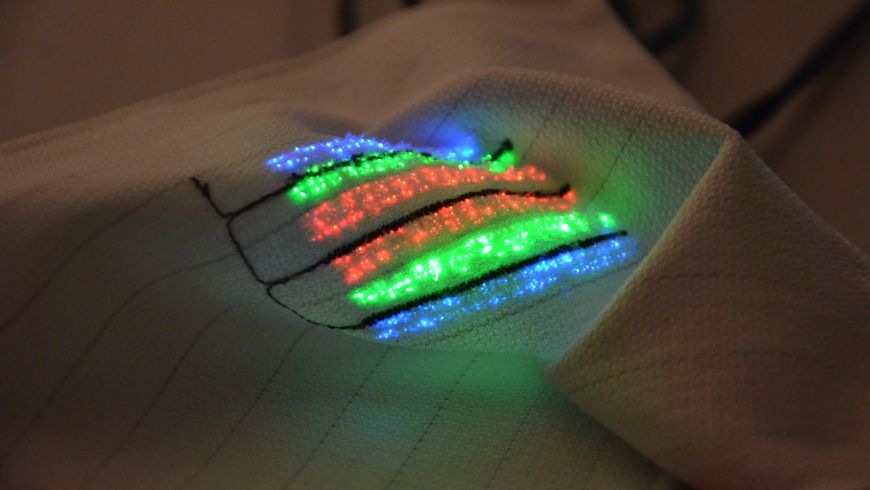Empa researchers have succeeded in producing optic fibers for sensors that are ideal for textiles. This would enable hospitals to monitor whether a patient is developing pressure sores, for instance
Thanks to a melting technique, the team headed by Luciano Boesel from the materials research institution Empa produced what are known as polymer optic fibers in a particularly flexible form. They used the fibers in a sensor woven into material, which enabled them to measure the heart rate of test subjects. “Normally, these fibers, which are usually associated with communication technology, aren’t flexible enough,” says Maike Quandt, the first author on the study. If they bend too much, they become damaged. The researchers’ goal was to create sensors that are fully integrated in textiles – in other words, a fiber that can also be sewn and does not break if knotted.
Also robust in the washing machine
The textile sensor just presented in the Journal of the Royal Society Interface can also be produced industrially and is able to withstand a disinfection wash cycle, as Quandt explains. This makes it just the ticket for the hospital sector to monitor the skin’s circulation and prevent bedsores.
The researchers tested their textile sensor in the form of a hat, which enabled them to measure the test subjects’ heart rates on their foreheads. “Normally, you measure the pulse on thin parts of the body, such as a finger or earlobe,” says Quandt. “By sending light through the tissue and measuring the light intensity that changes with the pulse as it returns to the detector, however, we can determine the heart rate.”
One of the advantages of the new sensor is that it can be used on any part of the body as it measures the reflection of light – i.e. the sensor emits and measures light on the same side of the body. The sensor merely needs to lie on bare skin.
Other applications in the pipeline
The researchers are now looking to refine their textile sensor so it can measure other data. “We validated it for the heart rate,” Boesel told the sda, “but it would be possible to monitor oxygen saturation or metabolic products with it, too.” Apart from the hospital sector, the sensor might also be interesting for sports clothing, for example – wherever measurements are required without causing any unpleasant rubbing on the skin. The project was conducted in collaboration with the research institute CSEM, Zurich University Hospital and the Swiss Paraplegic Center in Nottwil.
Image: The special optic fiber can be manufactured directly into textiles as thread to make the emitters and detectors for a heart-rate sensor. (Empa)























